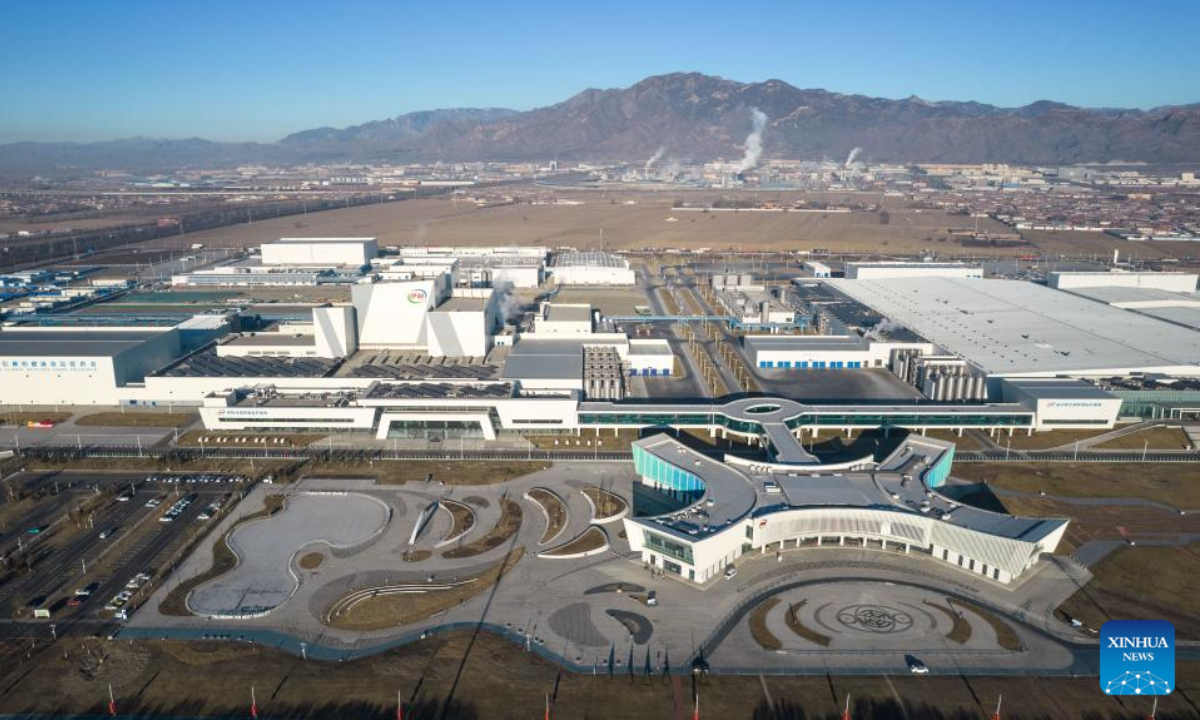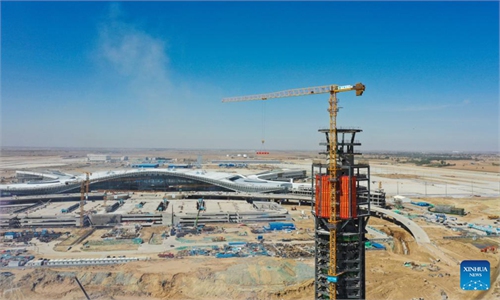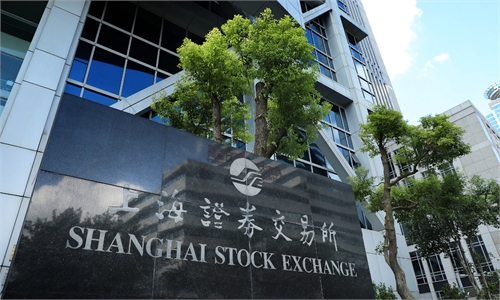
An aerial drone photo taken on Dec. 17, 2024 shows the Yili Modern Intelligent Health Valley in Hohhot City, north China's Inner Mongolia Autonomous Region. Photo:Xinhua
As a strategic emerging industry critical to the national economy and people's livelihoods, the biopharmaceutical industry in Hohhot, capital of North China's Inner Mongolia Autonomous Region, is entering a golden period of vigorous development. Home to major animal vaccine producers like Jinyu Bio-technology and Huaxi Biotechnology, the city has developed a robust ecosystem of research and development (R&D) and production, making it a national hub for animal vaccines.
Hohhot has achieved numerous scientific breakthroughs, including the establishment of the world's first intelligent manufacturing project for mRNA vaccines and nucleic acid drugs and a smart production line for pet vaccines, with an annual capacity of 8 million doses, which has passed good manufacturing practice (GMP) static acceptance. These key achievements highlight its growing biotech R&D strengths.
As one of the leading animal vaccine companies in China, Jinyu Bio-technology Co actively promotes the mission of Healthy China, and continuously improves its product quality by using global cutting-edge biotechnologies. With more than 30 years of experience in animal vaccine R&D, production and marketing, Jinyu has comprehensive portfolios in China covering pigs, cattle, sheep, poultry and pets.
Early in 2008, Jinyu made breakthroughs in cell suspension culture, antigen concentration and the purification process in veterinary vaccine production, which has upgraded the animal vaccine industry in China and improved product quality standards. The company took the lead in formulating the national testing standard of foot and mouth disease (FMD) vaccines. In April 2025, the company launched its Mycoplasma bovis live vaccine (strain HB150), a revolutionary shift from post-outbreak treatment to preemptive precision prevention in farms, a significant breakthrough in mucosal immunity technology.
Beijing Scitop Bio-Technology Co's subsidiary in Inner Mongolia has developed a domestically pioneering and internationally leading high-active cryogenic granular starter packaging technology, which enables efficient continuous encapsulation in an ultra-low temperature environment of -40 C, effectively preventing secondary damage caused by temperature fluctuations. Meanwhile, Inner Mongolia Huaxi Biotechnology Co's self-developed Brucella gene-deleted live vaccine (strain RM6, rough) passed production and inspection testing for veterinary biological products and entered large-scale production, adding a new highlight to Hohhot's biopharmaceutical industry.
These milestones epitomize the rapid growth of Hohhot's biopharmaceutical sector, with R&D innovations gradually penetrating deeply into the whole industrial chain.
Hohhot is now home to more than 60 biopharmaceutical enterprises, along with 143 innovation platform carriers and 117 R&D institutions, and it holds 602 approved drug registration certificates. Hohhot's biopharmaceutical industry output rose from 13.11 billion yuan ($1.83 billion) in 2020 to 20.25 billion yuan in 2024. The output of the industry now accounts for about 7.9 percent of Hohhot's total industrial output and has become an important growth point for the local economy.
The city's rapid rise in the biopharmaceutical industry would not have been possible without its meticulously constructed multi-level collaborative innovation ecosystem spanning government, industry, academia, research, and application.
In recent years, focusing on the core needs of the animal vaccine industry, Hohhot has strengthened its technological innovation system for animal disease prevention and control by advancing key areas such as cell biology, purification and concentration processes, and pathogen isolation and identification. It established the Inner Mongolia Animal Vaccine Technology Innovation Center and accelerated the construction of vaccine R&D bases.
During the 14th Five-Year Plan period (2021-25), relying on national-level innovation platforms like those for biological vaccines, Hohhot has launched a batch of major sci-tech projects, built the world's largest intelligent manufacturing base for FMD vaccines, and developed a national-level biosafety P3 laboratory. A nationally leading R&D and production base for veterinary vaccines has taken shape.
This year, Hohhot has been working toward becoming a national hub for veterinary vaccine R&D. The city is attracting top talent and research teams from the Chinese Academy of Sciences, Tsinghua University, and Guangzhou Laboratory, with local companies being supported in accelerating the development and commercialization of new animal vaccines.
Global Times



